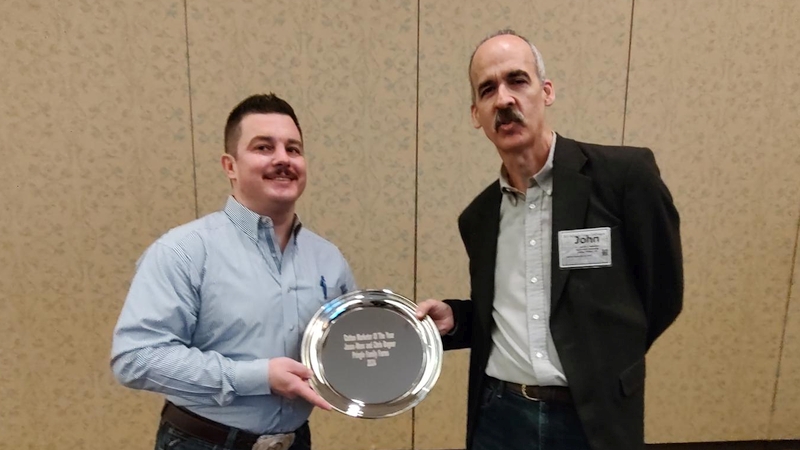With WTO Brazil Settled, Cotton Casts a Wary Eye on Chinese Policy
From Cotton Grower Magazine – November 2014
It’s over. The United States and Brazil have signed an agreement resolving their long-standing trade dispute over cotton subsidies.
In a statement issued in early October, the National Cotton Council (NCC) – which has been deeply involved in program negotiations between the countries and the WTO – expressed appreciation for the U.S. government’s successful efforts to conclude the dispute through negotiation, thereby avoiding possible trade retaliation.
“Brazil first sought consultations with the U.S. – which is the first step in the WTO process – in 2002,” recalled Gary Adams, NCC vice president, Economics and Policy Analysis, “and we signed the closing documents in 2014. Twelve years, from beginning to end.”
NCC Chairman Wally Darneille pointed out that the U.S. cotton industry has undertaken extensive efforts to resolve this case, including comprehensive reform of cotton policy as part of the new farm law.
“The 2014 Farm Bill includes several necessary changes to cotton policy and the GSM export credit program,” Darneille said. “When compared to previous programs, cotton policy is more market-oriented, with the primary safety net conveyed through insurance products that must be purchased by the producer.
“Officials from the Office of the U.S. Trade Representative and the Department of Agriculture are to be commended for reaching a comprehensive agreement that brings this dispute to a close,” he added. “With the conclusion of the case, the U.S. cotton industry can bring a renewed focus to the challenges that lay in front of us.”
Look to the East
Those new challenges come from a familiar source. And the U.S. cotton industry is wasting no time in voicing its opinion over potential issues with China’s new cotton policy, including testimony in Washington, DC over items of concern.
“At this stage, we want to at least call issue to what’s going on in China,” said Adams. “Over the past 12 to 18 months, the U.S. government has been a bit more assertive in the WTO meetings about raising questions about how China operates its ag policy.
“When the WTO agriculture committee meets, our trade representatives have at least asked the Chinese representatives for greater clarity on how they operate their programs,” he continued. “They’ve asked specifically for cotton in terms of how the stock building program has worked. They have raised questions about the level of support that’s been conveyed. And they have asked China why they’re not current on their notifications to the WTO on the support the country provides to agriculture.”
That, says Adams, is one of the key points the NCC wants to make. China has not reported its support levels to the WTO since their 2008 crop, making it one of the larger cotton-producing countries that are not meeting their WTO requirements.
“In our testimony at the hearing and in the written submission we’ve made, we’re trying to put more analysis around the numbers,” he explained. “Hopefully the U.S. will agree with our calculations and believe that China is providing more support than they’re allowed to do.”
When China joined the WTO in 2001, they – like all member nations – agreed to certain concessions and commitments as part of their membership. One of those agreements was to provide what Adams calls a “de minimis” level of support to cotton. In other words, the Chinese government agreed that any direct support provided to their country’s cotton industry would not exceed 8.5 percent of the value of production.
Have they, or haven’t they? The true answer may be difficult to prove.
“That 8.5 percent is not a huge amount,” said Adams. “And countries have different ways that they calculate the support. All we know for sure is that, from a domestic support standpoint for cotton for 2015, China has committed to 8.5 percent.”
Stabilizing Market Share
China also dropped a potential bombshell on the global industry in early October when their government announced that – under their new cotton policy – they would limit cotton imports in 2015 to the minimum 894,000 tons (4.1 million bales) required under the WTO guidelines. But without a good working knowledge of the details of that policy, it’s difficult for the rest of the cotton world to determine the real impact of the announcement.
“With China’s internal prices being so high over the last three years, mills don’t want to spin much cotton,” said Adams,” and we’ve seen the mills turn to purchasing cotton yarn. If they continue to bring in yarn, there may be a small tariff involved, but it doesn’t face any quota restrictions.
“But the way the Chinese have recently operated their program has probably caused a lot of their mills to turn away from cotton and look to polyester,” he continued. “The loss of market share in China has been huge, and it will be tough to gain it back.”
Adams believes that an A Index price in the 60’s can help make cotton more competitive with polyester and help stabilize cotton’s market share.
For now, cotton’s eyes will remain firmly on China as the country tries to define exactly how their new policy will work.
“Details just trickle out,” said Adams. “It will be interesting to see how it plays out as they make decisions on what they plant next year.”









